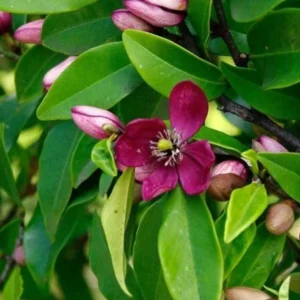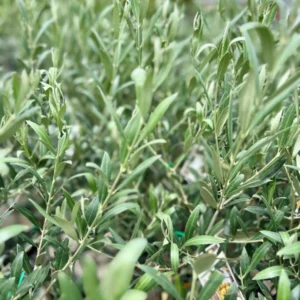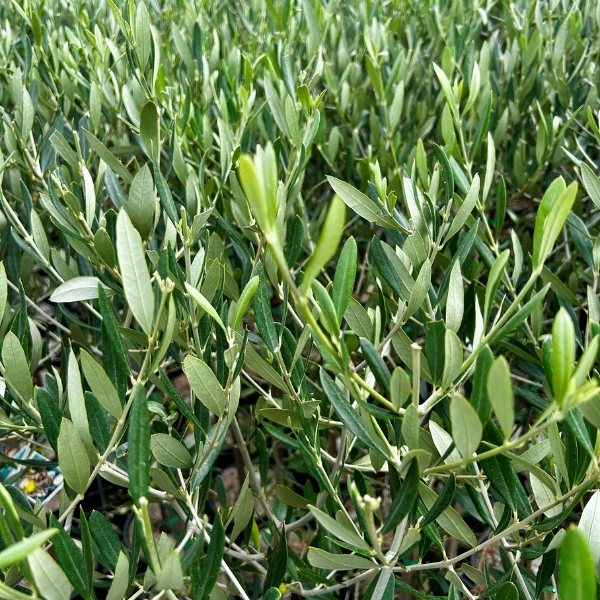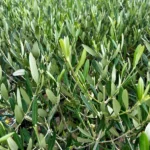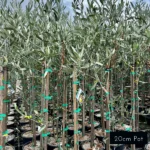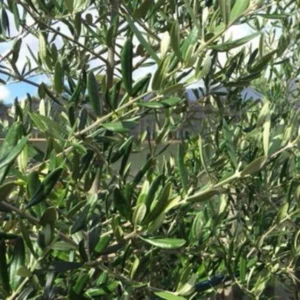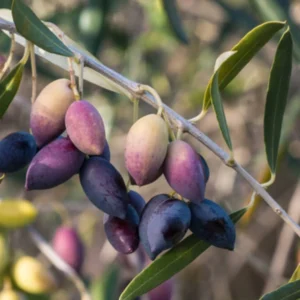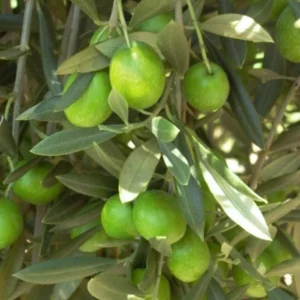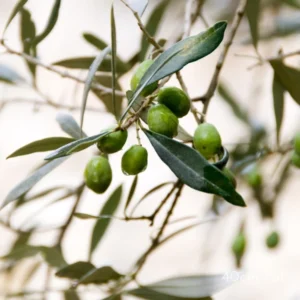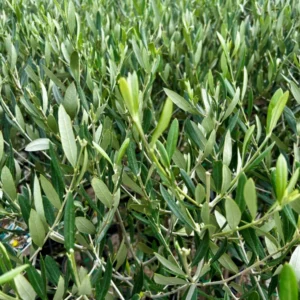The Paragon Olive is a compact, upright variety well-suited to both pots and garden planting. It produces small, flavorsome olives that can be home-cured. With its attractive silvery-green foliage and excellent drought tolerance, making it a versatile olive for both coastal and urban gardens.
Product Specifications
- Botanical Name: Olea europaea ‘Paragon’
- Common Name: Paragon Olive
- Mature Height: 4–5 metres
- Mature Width: 2–3 metres
- Foliage: Silvery-green, evergreen foliag
- Fruit Production: Produces small, edible olives, suitable for green or black curing
- Pollination: Self-fertile (improved yields with cross-pollination)
- Form/Habit: Upright, compact
- Uses: Screening, hedging, privacy screen, feature planting
- Evergreen/Deciduous: Evergreen
- Soil: Prefers well-draining soil; suitable for coastal environment
- Climate: Tolerates coastal conditions and mild frosts
- Sun: Full sun for best result
- Water Requirements: Low once established
- Maintenance: Low to medium; benefits from light pruning
- Australian Native: No
How big does the Paragon olive grow?
It typically reaches around 4–5 metres tall and about 2–3 metres wide when planted in the ground. However, it responds very well to pruning, so you can easily keep it smaller and more compact, making it ideal for pots, courtyards, or tight garden spaces.
When can I harvest olives?
Olives from the Paragon variety are usually ready for harvest from late summer through to early autumn. You can pick them green for a firmer, slightly sharper flavour or leave them to ripen to a rich black for a milder, more mellow taste — both require curing before eating.
Does Paragon Olive need another olive variety for pollination?
No — Paragon is a self-fertile variety, which means it can produce fruit on its own without a pollinator. That said, planting another olive nearby can increase cross-pollination and improve overall fruit set and yield.


